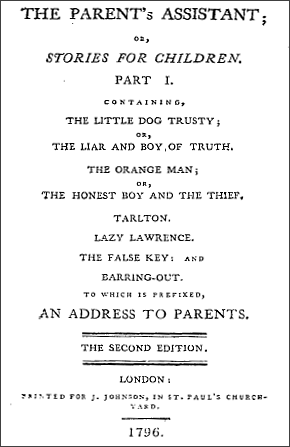
Animal Farm is a satirical allegorical novella, in the form of a beast fable, by George Orwell, first published in England on 17 August 1945. It tells the story of a group of anthropomorphic farm animals who rebel against their human farmer, hoping to create a society where the animals can be equal, free, and happy. Ultimately, the rebellion is betrayed, and under the dictatorship of a pig named Napoleon, the farm ends up in a state far worse than before.
This article contains information about the literary events and publications of 1858.

George Edward Bateman Saintsbury, FBA, was an English critic, literary historian, editor, teacher, and wine connoisseur. He is regarded as a highly influential critic of the late 19th and early 20th century.

Eric Honeywood Partridge was a New Zealand–British lexicographer of the English language, particularly of its slang. His writing career was interrupted only by his service in the Army Education Corps and the RAF correspondence department during World War II.

Thomas Day was a British author and abolitionist. He was well known for the book The History of Sandford and Merton (1783–1789) which emphasized Rousseauvian educational ideals, for his writings against slavery, for campaigning both for and against American independence, and for his project applying his educational ideals to young girls with the aim of raising a wife for himself.

Dean Frederic William Farrar was a senior-ranking cleric of the Church of England, schoolteacher and author. He was a pallbearer at the funeral of Charles Darwin in 1882. He was a member of the Cambridge Apostles secret society. He was the Archdeacon of Westminster from 1883 to 1894, and Dean of Canterbury from 1895 until his death in 1903.

Sir John Frank Kermode, FBA was a British literary critic best known for his 1967 work The Sense of an Ending: Studies in the Theory of Fiction and for his extensive book-reviewing and editing.

The school story is a fiction genre centring on older pre-adolescent and adolescent school life, at its most popular in the first half of the twentieth century. While examples do exist in other countries, it is most commonly set in English boarding schools and mostly written in girls' and boys' subgenres, reflecting the single-sex education typical until the 1950s. It focuses largely on friendship, honour and loyalty between pupils. Plots involving sports events, bullies, secrets, rivalry and bravery are often used to shape the school story.

Angela Brazil was one of the first British writers of "modern schoolgirls' stories", written from the characters' point of view and intended primarily as entertainment rather than moral instruction. In the first half of the 20th century she published nearly 50 books of girls' fiction, the vast majority being boarding school stories. She also published numerous short stories in magazines.

Anthea Bell was an English translator of literary works, including children's literature, from French, German and Danish. These include The Castle by Franz Kafka, Austerlitz by W. G. Sebald, the Inkworld trilogy by Cornelia Funke and the French Asterix comics with co-translator Derek Hockridge.
Iona Margaret Balfour Opie, and Peter Mason Opie were an English married team of folklorists who applied modern techniques to understanding children's literature and play, in studies such as The Oxford Dictionary of Nursery Rhymes (1951) and The Lore and Language of Schoolchildren (1959). They were also noted anthologists, assembled large collections of children's literature, toys, and games and were regarded as world-famous authorities on children's lore and customs.
René Paul Guillot was a French writer of children's books who lived, worked and travelled in French West Africa.

The Fifth Form at St. Dominic's is the best known of the school stories by the late nineteenth century author Talbot Baines Reed. The stories as well as the book were written for the Boy's Own Paper and published by the Religious Tract Society, with illustrations by Gordon Browne. It was adapted into the 1921 film of the same name, and serialised for TV in four parts in 1961.

The Parent's Assistant is the first collection of children's stories by Maria Edgeworth, published by Joseph Johnson in 1796.

Evenings at Home, or The Juvenile Budget Opened (1792–1796) is a collection of six volumes of stories written by John Aikin and his sister Anna Laetitia Barbauld. It is an early example of children's literature. The late Victorian children's writer Mary Louisa Molesworth named it as one of the handful of books that was owned by every family in her childhood and read enthusiastically. In their introduction, the authors explain the title in these words:
The academic discipline of women's writing is a discrete area of literary studies which is based on the notion that the experience of women, historically, has been shaped by their sex, and so women writers by definition are a group worthy of separate study: "Their texts emerge from and intervene in conditions usually very different from those which produced most writing by men." It is not a question of the subject matter or political stance of a particular author, but of her sex, i.e. her position as a woman within the literary world.
Jamie McKendrick is a British poet and translator.

Sheila Agnes Egoff was a Canadian librarian, literary critic, and historian who was Canada's first professor of children's literature. A recipient of the Order of Canada, she was known for her studies of children's fiction including The Republic of Childhood (1967), Thursday's Child (1981) and Worlds Within (1988). The Sheila A. Egoff Children's Literature Prize is named after her.















